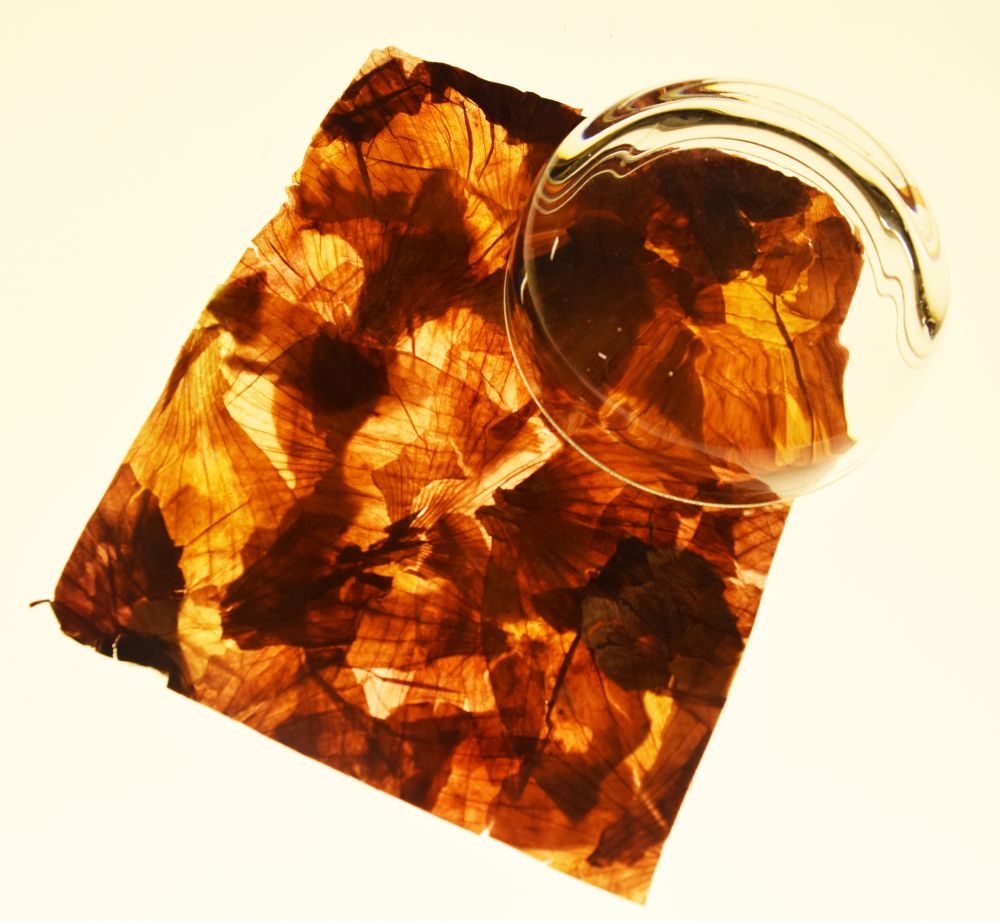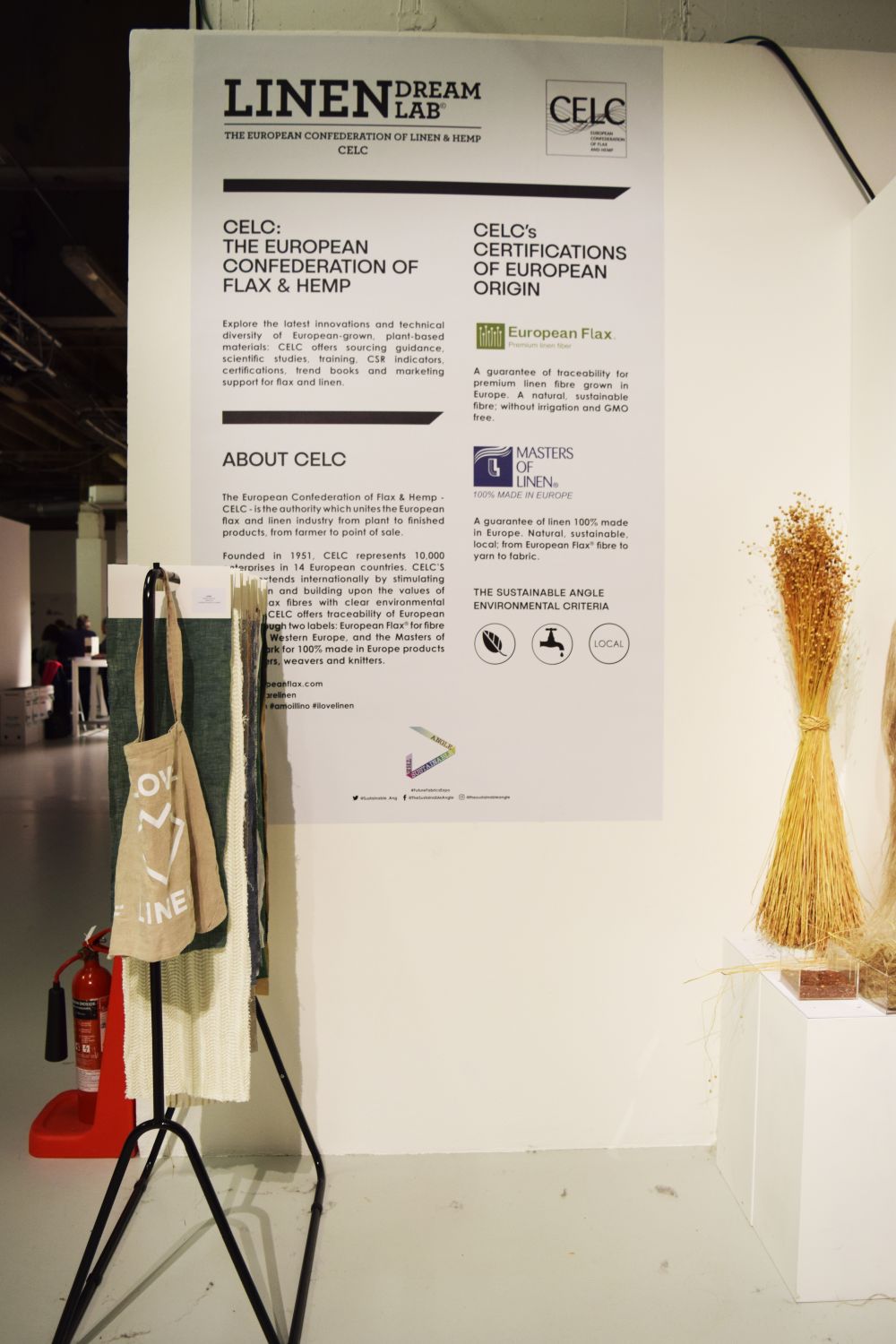Circular Design Lab (CDL) is an education lab and teaching platform at the Centre for Circular Design. The CDL interest group approaches the timely themes of sustainability through the lens of design practice. Hosted by PhD researchers at the Centre for Circular Design, its aim is to bring together a community of post-graduate students from across UAL with interests in sustainability, circular economies and using design as a tool for positive change. Overall, we aim to develop an understanding of circular design concepts that can be applicable to current design practices.
The Future Fabrics Expo is the largest dedicated showcase of globally sourced, commercially available sustainably and responsibly produced fabrics and materials. Providing the tools for a responsible fashion industry, the Expo sources and curates materials with a lower environmental footprint, offering accessible and innovative sustainable solutions.
Circular Design Lab held the first meeting of 2020 at the expo. This was be great opportunity to discuss the future of sustainable and circular materials. Thanks to the support of Post-Grad Community CDL was able to fund 8 student tickets for entry to the expo.
Prabhjot Kaur, MA Textile Design, Chelsea College of Arts, reports on her experience of the visit.
In this global urgency of sustainability, who would miss the opportunity to go at a platform like future fabrics expo where designers can rely on sources that are sustainable? Based on my personal experience, I was awestruck by the fabrics and material innovations there. What I found most noticeable when it comes to textiles was cotton and linen which are gems that we have in the industry. I came across OCC Organic cotton colours. They grow natural colours from the seed: ecru, green and brown. No irrigation is used, only rainwater, and no dyeing is needed as natural colours are obtained from the plant itself. OCC also specialise in organic cotton products for people suffering with disorders such as electro-sensibility, fibromyalgia and multiple chemical sensibility. Fibres that are too short to spin into yarns are recycled into organic cotton paper. Similarly, Linen dream lab CELC produces Linen in the Netherlands, Belgium and France. Linen is a natural plant fibre which can be irrigated with rainwater, it is bio-degradable and has some beneficial properties such as thermo-regulation, anti-bacterial, hypoallergenic and moisture wicking.
Some innovations teach us there is so much to take from nature without harming it, such as After Ancient Sunlight by designer Charlotte McCurdy. She created a material from a renewable source that pulls carbon directly from the atmosphere; algae. A raincoat was created from carbon-negative algae-based bioplastic using threads and fasteners that are fossil-carbon-free. Charlotte explains that virtually all plastic is made from fossil fuels and intrinsically emits carbon into the atmosphere in the same way fossil fuels do. She adds that we cannot recycle our way out of our unsustainable relationship with plastic; we need to stop putting fossil fuel feedstock into our materials.
Finishes play a vital role on textiles; miDori, a company that has innovated in sustainable finishes particularly caught my eye. They produce the first micro-algae based wicking finish for synthetic textiles that has excellent durability and fast-drying properties. The finish is made from 100% microalgae oil which is extracted form dried microalgae biomass grown in controlled environments with 80% less CO2. Brands like adidas use their finishes on sweat-proof products.
Today, I believe Biotechnology has a huge involvement in the textile industry. Rosie Broadhead a MA Material futures student of Central Saint Martins created SKIN 2 in collaboration with microbiologist Dr Callewaert. They encapsulated healthy probiotic bacteria into textile fibres to improve skin health in a way that works in synergy with the body. The encapsulated bacteria used here are beneficial in reducing body odour, encouraging cell renewal and improving the skin’s immune system. In terms of sustainability, this replaces chemical finishes and reduces the need to wash clothes as frequently.
There was so much more in terms of materials and fabric sources from all around the world. I think the technical textiles and design industry is already on a sustainable progression but there is a lot more to achieve. We are still way behind as a talk was held at the Future Fabrics Expo where I heard from one of the experts that every single e-mail we send also has an impact on the environment.











